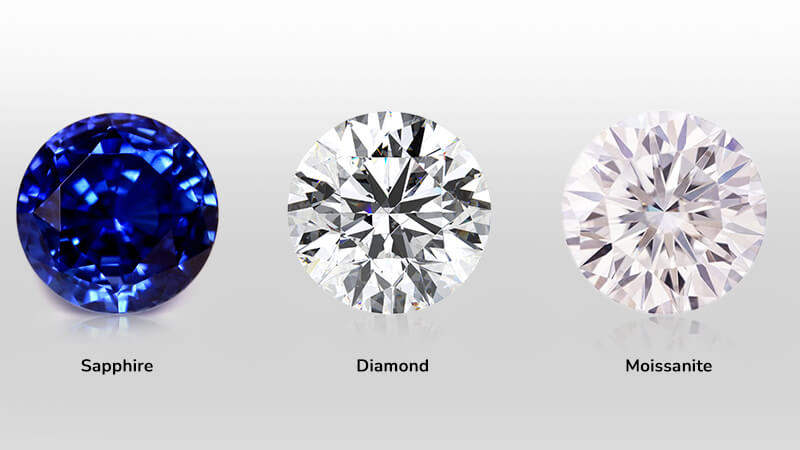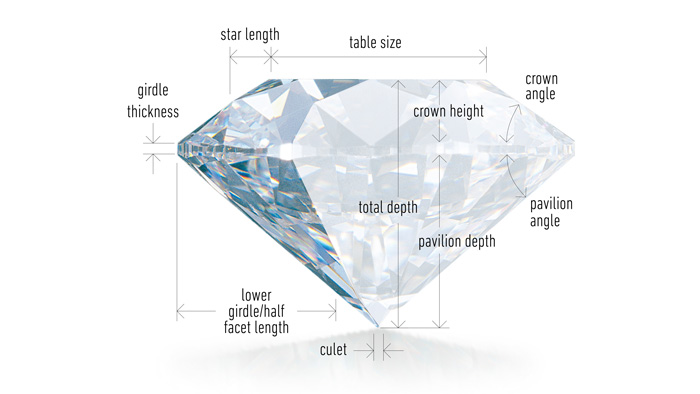Introduction
When it comes to gemstones, diamonds and white sapphires are often compared due to their clear appearance and captivating sparkle. While diamonds have long been revered as the ultimate symbol of luxury and commitment, white sapphires have gained popularity as a more affordable alternative with a similar look. Let’s explore what sets these two gems apart and what factors you should consider when choosing between them.
Composition and Structure
Chemical Composition
Diamonds are pure carbon, formed under extreme pressure and heat deep within the Earth white sapphire vs diamond. This composition gives diamonds their unmatched hardness and durability, making them the hardest natural substance known.
White sapphires, on the other hand, are a type of corundum, consisting of aluminum oxide with trace elements that give them their white coloration. While not as hard as diamonds, white sapphires still rank high on the Mohs scale of hardness, making them suitable for everyday wear.
Brilliance and Sparkle
The brilliance of a gemstone refers to its ability to reflect light internally and disperse it back to the viewer’s eye. Diamonds exhibit unparalleled brilliance due to their high refractive index and dispersion, which separates light into spectral colors.
White sapphires also display good brilliance and sparkle, although they may not have the same level of fire as diamonds. Their crystal structure allows for light to enter and exit effectively, creating a bright and clear appearance that resembles diamonds in many ways.
Durability and Toughness
Scratch Resistance
Due to their hardness, diamonds are highly resistant to scratching and abrasion. This property ensures that diamond jewelry retains its luster and polish even with daily wear and exposure to various environmental conditions.
White sapphires, while durable, are slightly more susceptible to scratches compared to diamonds. It’s important to take precautions to protect white sapphire jewelry from rough contact with other materials that could potentially scratch the surface.
Impact Resistance
In terms of toughness, both diamonds and white sapphires are resilient to impact and pressure. Diamonds can withstand considerable force without chipping or breaking, thanks to their strong atomic bonds.
White sapphires, although not as tough as diamonds, are still tough enough for everyday wear and are less likely to chip or fracture under normal conditions. Proper setting and care can further enhance the durability of white sapphire jewelry.
Lab diamonds, also known as synthetic diamonds or cultured diamonds, are created through a technological process that replicates the natural conditions under which diamonds form in the Earth’s mantle. These diamonds are chemically, physically, and optically identical to mined diamonds, composed of pure carbon arranged in a crystal lattice structure.
Cost Comparison
Factors Influencing Price
The price of diamonds is influenced by the traditional 4Cs: cut, color, clarity, and carat weight. Diamonds with excellent cut grades, high clarity, and colorlessness command higher prices due to their rarity and desirability.
White sapphires are generally more affordable than diamonds, primarily because they are less rare and do not have the same level of demand. The price of white sapphires can vary based on factors such as clarity, transparency, and size.
Price Range
Diamond prices can range from affordable to exorbitant, depending on the quality and characteristics of the stone. Smaller diamonds with lower grades on the 4Cs scale are more budget-friendly, whereas larger diamonds with exceptional grades can be very expensive.
White sapphires are priced lower than diamonds of similar size and appearance, making them a cost-effective option for individuals who desire a clear, brilliant gemstone without the high price tag. The affordability of white sapphires has contributed to their popularity as an alternative to diamonds.
Ethical Considerations
Environmental Impact
The mining and extraction of diamonds can have significant environmental consequences, including habitat destruction and water pollution. Efforts are being made within the diamond industry to minimize these impacts through sustainable practices and responsible mining initiatives.
White sapphires, as a type of corundum, are generally considered more environmentally friendly than diamonds due to their abundance and mining practices that are less invasive. However, it’s essential to research the specific source of white sapphires to ensure ethical and sustainable practices are upheld.
Social Responsibility
Issues of labor practices and human rights have been associated with some diamond mining operations, particularly in regions where regulations may be lax or enforcement is challenging. Responsible sourcing initiatives aim to improve working conditions and uphold human rights standards in the diamond supply chain.
White sapphires, although generally perceived as less contentious than diamonds in terms of social responsibility, still require scrutiny regarding the ethical standards of mining and processing. Consumers can support ethically sourced gemstones by choosing reputable jewelers and suppliers committed to transparency and fair practices.



